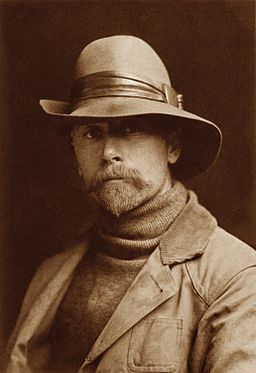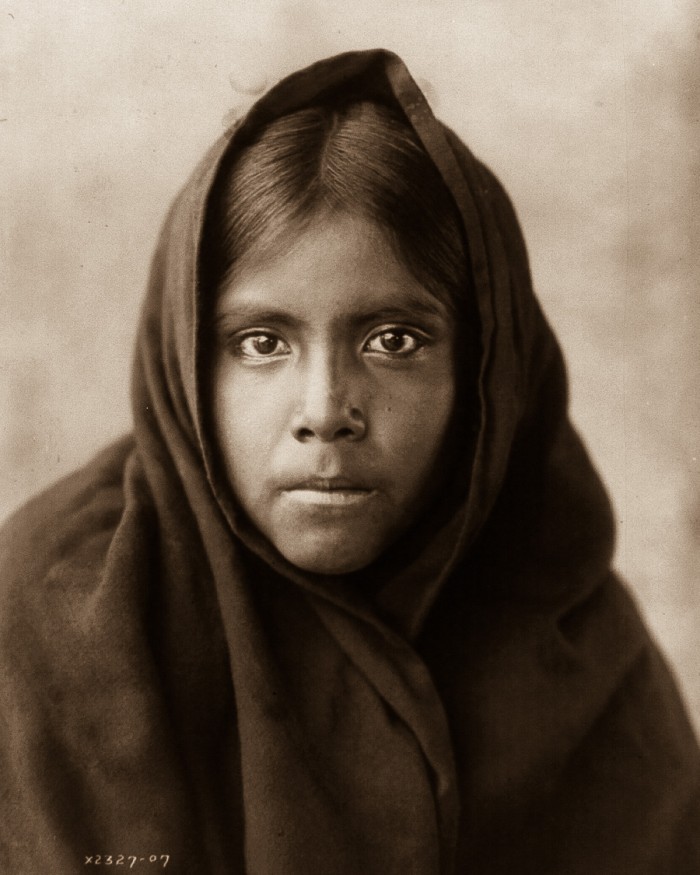IN THIS THANKSGIVING SEASON of loosely woven traditions about Native Americans, the photography of Edward Curtis is a welcome relief — though he had his own biases, as the terrific feature over at Mashable acknowledges:
“Noble savage” stereotypes aside, Curtis’ vast body of work is one of the most impressive historical records of Native American life at the beginning of the 20th century.

Edward S. Curtis (1868 – 1952), self-portrait. [Public domain], via Wikimedia Commons
Forty miles due south of the Pima reservation, which is present-day Arizona, in five small villages lived the true desert Indian, the Qahatika. They fled to the barren desert after being defeated by the Apache tribe. When asked why they do not live in river valleys, where they could live in plenty, their answer was that their home is the best; that they do not have the river sickness as do the River Indians.
For the Library of Congress collection of Curtis’ work, follow this link.
Smithsonian Magazine has an excellent profile of Curtis at this link.










